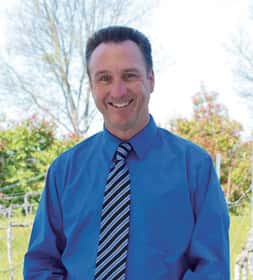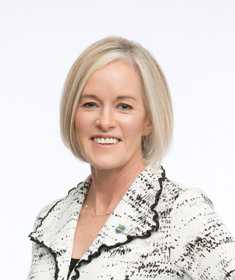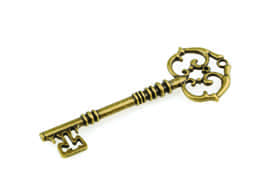Out with the old, in with the new.
It’s a universal saying, and it once described the theory behind housing markets: As young workers’ wages grew over time, they’d scrimp and save enough for a down payment, go to a bank with hats in their hands and ask the money lenders for a mortgage. If their credit cleared and the appraisal approved, bank and buyer would come to terms on a payment plan, and the worker had a home to call their own, alongside a usually large (but not insurmountable) amount of debt, secured by the idea that the value of their home would only rise over time.
Conversely, an established homeowner, finished with raising children and fulfilling a lifetime of service to their work, could cash in on their investment, selling the large family house in favor of a more manageable property, maybe in a more appealing location, focused on riding out their retired life in style. These legacy homes would then enter the market, and be ready for the next wave of young families looking to sell their first homes and move into larger, more family-friendly estates. The cycle, it was theorized, would go on indefinitely.
But that’s not the case today.
The bottom line, according to the California Board of Equalization (BOE), is the price of homes. Its April 2016 report on statewide median housing costs finds the state’s at 85 percent of prices seen at the peak of the 2006 housing bubble. Combined with historically low interest rates regulated by the federal government, banks are incredibly wary to lend money, especially to first-time homebuyers with no sizeable credit history.
But that doesn’t mean houses aren’t moving in the market. In a report published by CoreLogic, which gathers housing data from local, state and federal government agencies, the North Bay has seen an increase of 7.88 percent in median purchasing price compared to April 2015, moving 1,014 homes across Napa, Sonoma and Marin counties. So somebody has to be cleaning out the inventory. But if it isn’t millennials, who is it?
Cash only
The culprit is the enemy of low- and-median income homebuyers: the cash cow. From Healdsburg to San Rafael, wealthy buyers with swollen checkbooks are pocketing houses across the North Bay.
Linda Fischer, a Napa-specialist realtor with Coldwell Banker, says, “The attraction of cash is too strong for most sellers,” she says. “It’s about the value of time, and certainty. A cash buyer can close the sale in as few as 10 days, or as soon as they complete their inspections. If a bank is financing the purchase, an appraiser must prepare a written report valuing the property for the lender to assess its risk. That process can add weeks during which the buyer may cancel if he sees something he likes better, or, if the bank’s appraisal comes in too low. No seller wants this uncertainty, or that his property is essentially off the market and showings stop once an offer is accepted. Cash is very stiff competition for every buyer needing conventional financing, and about 20 percent of transactions we see are cash.”
And while the trends are similar between the two cities, the price of the average house in each locality is very different. Healdsburg’s median market price as of April 2016 reached $849,500, while the city of Napa reported $591,000. What the average buyer received is indicative of the price gap.
“Folks here have equity and they’re ready to upgrade their current living situation,” says Bob Santucci, a realtor at Wright Realty in Healdsburg. “Veteran homebuyers are looking for houses in the 2,000 to 3,000-square-foot market with three bedrooms, two bathrooms and a two-car garage with a large backyard: the American Dream house.” The buyer in question likely has a family, a stable and above-average paying job and already owns property in the area. “People want to live in Healdsburg because we’re so heavily invested in our sense of community,” says Santucci. “We aren’t looking at transitional housing. Someone who wants to move here wants a good school system for their children while they work in or near the city, enjoying the best elements of Wine Country. The culprit has been no inventory in the $750,000-$950,000 range. There are boatloads of folks that purchased REO’s [Real Estate Owned properties] and homes at the bottom of the market that want to move up.”
In Napa, Fischer paints a different picture for her city’s average homebuyer. “Napa’s reputation is legendary as a lifestyle destination. There’s no other place like it,” she says. “Right now, the market consists of mid-life buyers: men and women with established career incomes, half with kids and half without. We’re looking, roughly, at a 60/40 split between high-equity seasoned buyers looking for themselves and investors looking to buy houses to either flip or rent out. The investor and second-home buyer put competitive price pressure on residents of communities with low inventory.”
The bang for the buyer’s half-million bucks is not a three bedroom, two bath home, not even on a much smaller lot: Now in Napa, $600,000 affords perhaps 1,100 to 1,600 square feet with a one-car garage. While smaller, these houses are often incredibly appealing, boasting granite countertops, stainless steel appliances, newer floors and updated baths.
The Marin migration
While Napa and Sonoma counties are experiencing an average increase of the median home price compared to April 2015 (5 percent), Marin County is growing at double that rate. And while some cities’ median price for home sales look like a sick joke compared to the state average (Stinson Beach reports an average of $3 million per house), the largest number of houses sold are in Novato and San Rafael, reporting $738,000 and $930,000, respectively.
“Affordability” becomes a strange concept the closer a buyer wants to live to San Francisco. The BOE reports the county holds the highest median price in the state, at $1,255,000 per house (265 percent above the state average of $474,000), surpassing 2006 market levels in the area by 7 percent. The Bay Area holds six out of the top 10 most expensive counties to live in the state (see “What is Affordable?)
This pricing surge is bad news for prospective buyers; most low- and-medium-income workers in San Francisco rent because they can’t keep up with rising home prices. As a result, families and workers with enough equity for a down payment swallow the commute and move to counties where the housing market is more stable. Marin County became a recipient of this demographic, selling 314 houses as of April this year.
The average home price in San Rafael jumped 20 percent this year. Unlike the great migration West during the dust bowl, these incoming families have money for houses, but it’s finding the right one at the right price that’s important to them.
Yoko Kasai, owner of Front Porch Realty Group and president-elect of the Marin Association of Realtors, says the San Rafael and Novato markets are really active. “We’re seeing a huge interest in living in Marin County this year, especially from young families,” she says. The majority of these families are currently San Francisco and North Bay renters looking for an affordable ownership option. “People love the charm of the county, and both cities have their unique pulls. In Novato, it still feels very much like a small town. People still say hello when you walk by and the community is very strong. While San Rafael suffers from more congestion these days, it has several world-class events, such as the Twilight Criterium and the Italian Street Painting Festival. Both towns have farmers markets, a wide array of restaurants and a thriving art scene and are a part of the Open Studios events.”
As for the houses, $750,000 in Novato fetches a 3 to 4 bedroom, 2-bath property on 1,200-,1800 square feet, complete with a two-car garage and a “good-sized” yard, according to Kasai. A similar layout and size home could cost $900,000 or more in San Rafael. As always, the golden rule with real estate is “location, location, location”. In this case, the market determined the distance to San Francisco from Novato saves around $150,000 compared to San Rafael.
Exodus If the California housing market isn’t welcoming for young adults starting to make a living for themselves, where are they going? Besides renting, which could potentially permanently close the door on any prospects of buying a home in the future (see “How Big a Slice?” below), the common option is packing up and moving to cheaper pastures. An article printed in The Mercury News in June told the story of Kathleen Eaton, a four-decade resident in the Bay Area, and her 2,000-mile move away from San Jose to her new house in Idaho. Eaton had a good job but could (barely) live within her means; California living of late was too expensive for her. Her story isn’t unique, as the California finance department reported a net emigration of 63,300 people this year, the largest movement away from the state since 2011.
If the California housing market isn’t welcoming for young adults starting to make a living for themselves, where are they going? Besides renting, which could potentially permanently close the door on any prospects of buying a home in the future (see “How Big a Slice?” below), the common option is packing up and moving to cheaper pastures. An article printed in The Mercury News in June told the story of Kathleen Eaton, a four-decade resident in the Bay Area, and her 2,000-mile move away from San Jose to her new house in Idaho. Eaton had a good job but could (barely) live within her means; California living of late was too expensive for her. Her story isn’t unique, as the California finance department reported a net emigration of 63,300 people this year, the largest movement away from the state since 2011.
The most common reason cited for leaving is cost of living. With prices so rampantly inflated, it’s easy to see why prospective homebuyers are afraid to invest in the market. The housing market bust of 2006 hasn’t been forgotten, and California is historically beset with the most expensive houses in the nation. Factor in gridlock, high taxes and a growing homeless population, and the prospect of living elsewhere becomes all the more attractive.
Another factor for leaving is historically low supply. Across all three North Bay counties, the ongoing drought and limited funds available for affordable housing projects draw debate from both sides. Data collected from homefacts.com reported Marin County issued 390 building permits in 2014 for both single and multi-family housing, with 258 permits in Novato and only one in San Rafael. Sonoma County issued 663 and Napa County only 147. With low supply driving up demand, it’s not uncommon to see open houses packed with desperate buyers looking for a place to call their own. 
The silver lining
Not all news is bad news, though. Because competition is so high, anyone with property to sell or rent is finally seeing gains from their investment. Prices are going back up and there’s money to be made.
The property market doesn’t seem to be losing steam any time soon. Healdsburg’s Santucci, Napa’s Fischer and Marin County’s Kasai all agree it’s time to buy if you can afford it. “There’s a trend right now, where investors and buyers [in Healdsburg] get what’s at market price right now, then renovate and flip the house, selling it in the $2 to $4 million range,” says Santucci. “It’s been a long time since we’ve seen that kind of activity, and it wouldn’t be happening in volume if they didn’t think the market would continue to rise. We are still 12 percent below the average market price in the rest of the bay area.”
Kasai believes lower interest rates are too attractive to pass up for qualified buyers. “Interest rates are down and there’s opportunity out there. If you see a home you love, there’s no reason not to buy it,” she says.
Fischer says the 60/40 split of owner-occupied and investor buyers in this year’s market suggests a level of speculation that housing prices will continue to grow—which has affordability implications for Napa resident owners and renters, and employers. “The homes may be higher priced and smaller size than in other areas in the region,” she says. “But to many they’re worth the investment in the quality of life and scenic beauty of this controlled-growth, agriculture-based community.”
Staying power
 But what use would a house be without the community to make it a home? Buyers never use price as the sole reason they should buy a house (though it’s often the sole deterrent). What convinces the average buyer to go one way or another?
But what use would a house be without the community to make it a home? Buyers never use price as the sole reason they should buy a house (though it’s often the sole deterrent). What convinces the average buyer to go one way or another?
“Napa is a community that cares,” says Napa Mayor Jill Techel. “Our network of trade associations, nonprofits and volunteer citizens devote countless hours to identify solutions to problems, raise funds for important causes and take excellent care of this beautiful place that is our home.” Napa also boasts some of the most popular entertainment and cultural events in the North Bay, including events like BottleRock, Napa Valley Film Festival and Festival Napa Valley and venues that include Uptown Theatre, Blue Note Café at the Napa Valley Opera House (opening soon), Lucky Penny Community Arts Center, Jarvis Conservatory and Silo’s, among others.
In San Rafael, vice mayor Kate Colin believes the seamless blend between rural and urban lifestyles gives her home the small-town charm so richly desired in the North Bay. “We have great neighborhoods, each with distinctive character,” she says.
“We have a bustling downtown with restaurants and nightlife, and the best weather in the Bay Area. We’re a central and convenient location for a quick jaunt to amazing nearby open spaces, San Francisco or Wine Country, and we’re the working heart of the county with the majority of businesses and jobs.
“The SMART train will be up and running by the end of the year, which will enable residents to head north as well as visitors and employees to easily get to San Rafael and avoid traffic on the freeway. I’ve lived in San Rafael for more than 20 years and the residents here are engaged in our community. As San Rafael continues to change as all vibrant cities do, it will always be a great place to live, work and raise a family."
John Sawyer, mayor of Santa Rosa, believes the melting pot in “the biggest city from San Francisco to Portland” attracts homeowners looking for diversity. “There’s no other place around like Santa Rosa,” he says. “We’re redesigning Courthouse Square with a modern touch and making way for something we haven’t seen in a long time: a new hotel. Tourism here is increasing. People are finding out they want to live here. Between our stellar collegiate and grade school districts, growing culinary scene and desirable travel locations it’s the best time to get in early and settle down.”

The snapshot
The days are gone when a student flush from college with degree and job offer in hand is able to secure a mortgage and buy their first home before age 30. In the North Bay, lending is tight, and there’s not enough in the checking account for the average millennial worker to cover a down payment, let alone the full market value of the average house. The young homeowner is now the exception, limited to lottery winners, shrewd investors and startup successes.
The average homebuyer in the North Bay isn’t a first-time buyer. They’re likely professionals looking to upgrade their current living situation to set up their children in a good school district, reward their hard work by living in an idyllic location that suits their interests, and set their foreseeable future in stone by investing in a prime piece of land that should only appreciate in value. These buyers have already spent time in the working world but don’t necessarily have retirement in their immediate future. They need to make enough to either buy the house in full or have a good enough credit history to secure a mortgage in a time of low interest rates.
The younger adult generation must make ends meet in the rental world. Without the means to buy their own homes, however, a rising cost of living may accelerate the emigration out of California. Soon, the new saying of the North Bay real estate market may be, “Out with the new, in for the few.”
Millennials and Renting: a Love-Hate Relationship
Should millennials love renting? Forbes certainly thinks so. A guest column in the publication written by Trulia (a national real estate information center) and titled “Why millennials Love Renting” has a pretty firm stance on the concept. However, leading the article with, “With millennials facing an unemployment rate of more than 8 percent and $1 trillion in student loan debt, they’re increasingly renting instead of buying homes. In fact, the true homeownership rate for 18 to 34 year olds has fallen to a new low: 13.2 percent,” doesn’t speak true love to me. It sounds more like a forced marriage, where circumstances don’t afford any other option—with emphasis on “afford.”
But is it really that bad? It’s true that renting provides some unique, albeit limited, freedoms compared to ownership. The Guardian also tackled the concept (“Why millennials should stick to renting and ignore advice to buy a home”) and provided some substance to the idea that renting isn’t always a tragedy.
Be honest with yourself
One of the most attractive aspects of home ownership is the idea that property values will rise. Additionally, prospective homeowners wouldn’t consider a loan or purchase if they thought their own wages wouldn’t go up over time to compensate the cost of a new mortgage. Looking critically at your financial state of affairs is paramount before considering the buying option. If you don’t think your wages are likely to go up, how can you afford a house if the market goes under?
When you rent, it’s not your building
It’s called “routine maintenance” because it becomes a part of your life: there’s never nothing wrong with a house at any given time. At least with renting, a leaky pipe or unpainted wall should be managed by the landlord.
Freedom of movement
It’s true that millennials move around. They follow their hearts or, more likely, they follow jobs. Homes can be anchors in this sense, tying a homeowner to the property. Renting on a month-to-month basis provides a little more latitude when it comes to going on the road.
Is it the right time to buy?
“Home prices have risen at 13 times the rate of the typical American’s earnings in recent years, which is in part due to the fact that the number of homes available for sale has been running well below the number that realtors say is required for the market to be in balance,” writes The Guardian.
Market instability is a never-ending concern for real estate. Rampant price hikes today may not continue to tomorrow. Depending on whom you ask, renters might be better off in the long term sucking up high rent prices today so they don’t foreclose on a new home tomorrow.
How Big a Slice?
The federal government has a number it associates with paying rent in proportion to wages: 30 percent. It recommends a renter should pay no more than 30 percent of their monthly wages to cover rent (including utilities.)
A record 21.3 million Americans pay more than 30 percent of their wages in rent, including 11 million paying 50 percent or higher, another record. Besides severely limiting available funds for basic needs like food, health care, insurance and other monthly costs, the lack of savings severely impacts a renter’s ability to prepare for emergency and long-term costs. Even having $1,000 in savings becomes difficult in these situations, much less reserving three months worth of rent in the checking account in case cash flow dries up.
Source: www.money.cnn.com
What’s Affordable?
RealtyTrac, a real estate industry firm that provides national market data, foreclosure and home listings, released an industry report in June showing the most affordable (and unaffordable) counties to live, based on a percentage of the average wages required to pay for rent. While Kings County, N.Y. took the top unaffordable spot, it’s no surprise to see California so many times on the list.
1: Kings, N.Y. (121.7%)
2: Marin, Calif. (118.1%)
3: Santa Cruz, Calif. (113.5%)
4: San Francisco, Calif. (94.6%)
5: Maui, Hawaii (92.8%)
6: San Luis Obispo, Calif. (90.4%)
7: Napa, Calif. (86.9%)
8: Monterey, Calif. (84.5%)
9: Queens, N.Y. (83.6%)
10: Sonoma, Calif. (82.1%)
Source: www.realtytrac.com/news



